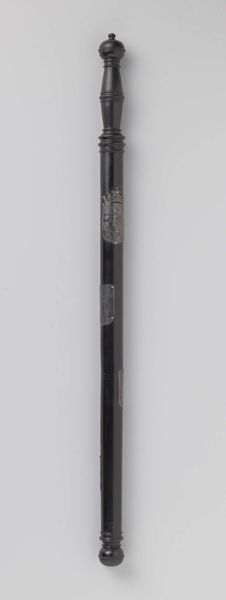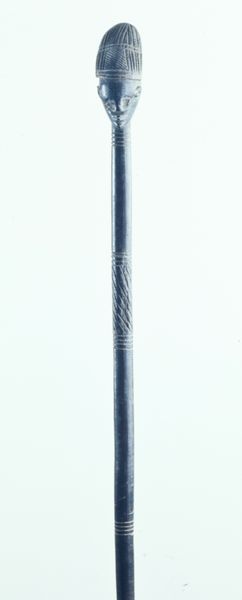
metal, sculpture
#
metal
#
sculpture
#
ancient-mediterranean
#
sculpture
#
line
Dimensions: height 94.5 cm, width 3.2 cm, length 75.5 cm, length 19 cm
Copyright: Rijks Museum: Open Domain
Editor: Here we have "Degen met schede," a metal sword and sheath dating from around 1800 to 1900. The intricate details etched on the blade seem to tell a silent story. What kind of narratives do you think this object carries, given its historical context? Curator: Well, let’s consider the cultural moment. Swords, especially decorative ones like this, weren't just weapons; they were potent symbols of power, status, and often, colonial authority. Who do you think typically wielded a sword like this, and what power structures were they upholding? Editor: Perhaps an officer or someone in a position of authority, representing a system of power? Curator: Precisely. And what about the act of displaying such an object? Consider the statement it makes about dominance, both physically and culturally. This wasn’t just about personal defense; it was about projecting control in societies deeply stratified by class and colonial relationships. What implications might it have for those on the receiving end of that power? Editor: It speaks to systemic oppression. The sword isn't just a tool but also an icon of inequality and violence perpetrated against marginalized communities. Curator: Exactly. Now, think about the craftsmanship involved. Where were these swords typically produced? Who were the artisans? Understanding their labor conditions adds another layer to the story, doesn’t it? Editor: Absolutely, it connects it to global economic systems of the time. Thinking about the sword this way offers a deeper understanding. I appreciate seeing the connection between object and systemic social and historical forces. Curator: It’s crucial to remember that objects like this are never neutral. They are enmeshed in complex webs of power, and critically examining them can reveal much about historical injustices. Thank you for engaging with me!
Comments
No comments
Be the first to comment and join the conversation on the ultimate creative platform.













